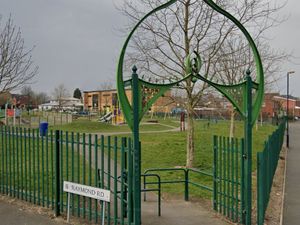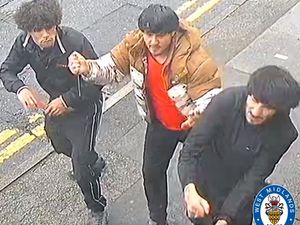Green man 'flashing as student hit' by police car, death trial hears
The green man at a pelican crossing had been flashing for 2.7 seconds when a young man stepped out into the road a split second before being hit by a police car, a jury has heard.

Chinese student Zhang Xuan Wei was thrown in the air by the unmarked police BMW, which had its blue lights and siren on, and died from his injuries the following day.
The BMW's driver, West Midlands Police traffic officer Pc Vaughan Lowe , aged 43 and from Stourbridge, denies causing Wei's death in April 2012 careless driving.
The jury at Warwick Crown Court has heard that Wei was killed when he was struck by the unmarked car as he used a pelican crossing on the A34 New Town Row in Birmingham.
He and a friend had been on their way to the Newtown shopping centre to get a take-away at around 7pm on July 24, 2012.
The jury heard that after crossing the first part of the dual carriageway, Wei, a 24-year-old Birmingham City University student, had 'walked or jogged' onto the second part of it to get across the outbound carriageway.
It is alleged that although Lowe, who was responding to a call that a vehicle which had failed to stop for other officers had been sighted again, had reduced his speed from 62 to 52mph on his approach to the crossing, he was still driving too fast.
Accident investigator Kevin Sweeney told the jury the flashing green man for pedestrians, and the corresponding flashing amber for traffic, lasted for ten seconds at that crossing.
Mr Brian Dean, defending, pointed out that his report had made no mention of a warning on the pedestrian 'demand unit' at the crossing.
Mr Sweeney said: "I made the assumption that the way Mr Zhang approached the unit I thought he probably took little regard for it, that he made his judgement on what was in front of him rather than that."
And he agreed with Mr Dean's observation: "It is a virtual certainty that the crossing light was pressed by the person who crossed moments before Mr Zhang."
The barrister pointed out that Mr Sweeney's report had said Wei stepped onto the crossing 'in the third second after the beginning of the flashing phase,' beginning to cross 2.7 seconds after the flashing green man began.
Mr Sweeney agreed, but commented: "I've come up with that figure, but it is quite hard to define where this part starts."
Having the recording from the police car's on-board camera played frame-by-frame, Mr Dean pointed out that the impact had taken place 3.6 seconds after the flashing phase began.
But, stopping at a frame which he said appeared to show the student's foot about to touch the ground, he suggested that showed Wei had stepped onto the crossing slightly later than the expert had said.
Mr Sweeney explained he had based his calculation on the point at which Wei's centre of mass had crossed the edge of the kerb, rather than when his foot then touched the ground, which he said was the scientific basis on which to make the calculation.
As still frames were displayed to the jury from the point at which Wei stepped onto the crossing to the moment of impact, Mr Dean asked whether he agreed the time between those images was 0.08 seconds, and Mr Sweeney said he did.
"Prior to him appearing in that split second before Mr Lowe got to the limits, the crossing was clear to proceed on amber," suggested Mr Dean. And Mr Sweeney replied: "Yes."
Asked if he agreed that 'could not be a more unexpected occurrence,' he responded: "I don't think it is an unexpected type of event. It is not something which is completely unusual."
Mr Dean pointed out that the BMW's camera was forward of the driver and to his left, which he suggested was 'a much more favourable angle to see into the mouth of the crossing' to the driver's off-side.
Mr Sweeney answered: "I'm not comfortable with much more favourable. The camera does have a slightly better view than Mr Lowe, but the difference in the two viewing positions is marginal." The trial continues.





